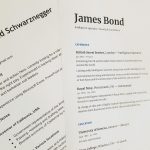Crafting an Essential Software Engineer Resume Template to Shine in the UK Job Market
In today’s fiercely competitive job landscape, standing out as a software engineer isn’t just about your technical prowess. It’s about presenting yourself in the most compelling way possible. A well-structured resume is your ticket to securing that coveted interview. Let’s delve into the elements that make up an essential software engineer resume template designed specifically for the UK job market.
1. Personal Information: The Basics
Your name, location, and contact details form the cornerstone of your resume. Ensure that your contact information is clear and up-to-date. Including your LinkedIn profile and GitHub link can offer potential employers a window into your professional persona. Remember, a professional email address goes a long way in making a good first impression.
2. A Captivating Personal Statement
The personal statement or profile section is your chance to shine. This is where you can succinctly articulate your career aspirations, key skills, and what you bring to the table. Aim for two to three sentences that encapsulate your experience and ambitions. Think of it as your elevator pitch—engaging and to the point.
3. Skills That Speak Volumes
When it comes to a software engineer’s resume, the skills section is paramount. List your technical proficiencies, such as programming languages (Java, Python, C++), frameworks (React, Node.js), and tools (Docker, Jenkins). But don’t stop there—soft skills matter too! Highlight your problem-solving abilities, teamwork, and communication skills.
4. Experience: Show, Don’t Just Tell
This is where you can narrate your professional journey. Start with your most recent role and work backward. For each position, include the job title, company name, and dates of employment. Use bullet points to outline your responsibilities and achievements. Quantify your successes where possible—did you improve system performance by a specific percentage? Did you lead a team that successfully delivered a project ahead of schedule? Numbers resonate well and add credibility.
5. Education: Your Academic Foundation
Your educational background provides context to your technical expertise. List your degree(s), the institution(s) attended, and graduation dates. If you have relevant certifications (like AWS or Scrum Master), include those here too. This section substantiates your theoretical knowledge and commitment to continuous learning.
6. Projects: Showcase Your Passion
Employers love to see tangible examples of your work. Highlight personal or open-source projects that reflect your skills and interests. This section can set you apart from other candidates, demonstrating not just what you’ve done in a professional context, but your passion for technology and innovation.
7. Tailored Applications: The Key to Success
One size does not fit all in the job application process. Tailor your resume for each role you apply for. Use keywords from the job description to make it through Applicant Tracking Systems (ATS). This doesn’t mean fabricating your experience but rather emphasising the most relevant details.
Making Your Mark
In a saturated job market, a well-crafted resume can be your golden ticket to landing interviews. Keep it concise, focused, and relevant—ideally, no more than two pages. Remember, the aim is to entice the hiring manager to want to learn more about you.
As you embark on your job hunt, remember that CVPortal remains committed to providing you with a plethora of high-quality resume templates and references to help you stand out in your career journey. Happy job hunting!


